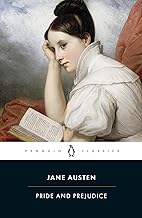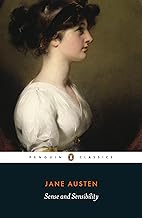
How to Read Jane Austen's Books on Romantic classics
How to Read Jane Austen's Books on Romantic Classics
Estimated Reading Time: 10-12 minutes
Introduction
Jane Austen, born in 1775 in Hampshire, England, is one of the most celebrated authors in the canon of English literature. Her keen observations of social mores and her nuanced portrayals of romantic relationships have made her works timeless classics. Austen's novels, particularly "Pride and Prejudice" and "Sense and Sensibility," capture the complexities of love, societal expectations, and individual agency, making her perspective on Romantic classics both unique and invaluable.
Set against the backdrop of the late 18th and early 19th centuries, a time when the Romantic movement was reshaping literature and culture, Austen's works offer a distinct blend of realism and romantic idealism. While many of her contemporaries were exploring grand themes of nature, emotion, and individualism, Austen focused on the intricacies of human relationships and the subtleties of social class. This guide will delve into her two most prominent novels, exploring how they reflect and contribute to the theme of Romantic classics.
Why Jane Austen's Perspective Matters
Austen's approach to Romantic classics is characterized by her sharp wit, keen social commentary, and profound understanding of human nature. Unlike many of her contemporaries who often idealized love and passion, Austen presents a more pragmatic view, emphasizing the importance of personal growth, mutual respect, and moral integrity in relationships. Her insights into the societal constraints faced by women and the complexities of love resonate deeply even today.
Austen's lasting impact can be seen in how her works continue to inspire adaptations, discussions, and critical analyses. Her exploration of themes such as class, gender, and the pursuit of happiness offers readers a lens through which to examine their own lives and societal norms. By navigating the tensions between emotion and reason, Austen invites readers to reflect on their values and choices, making her works essential reading for anyone interested in the human experience.
Overview of Recommended Books
Pride and Prejudice
"Pride and Prejudice," first published in 1813, is perhaps Austen's most famous novel. It follows the spirited Elizabeth Bennet as she navigates the complexities of love, family, and societal expectations. The novel's central themes include the nature of love, the pitfalls of pride and prejudice, and the importance of self-awareness.
Historical Context and Significance:
Set during the Regency era, "Pride and Prejudice" reflects the social hierarchies and gender roles of its time. The novel critiques the limitations placed on women, particularly regarding marriage and financial independence. Austen's portrayal of Elizabeth as a strong-willed and intelligent protagonist challenges the norms of her society, making the novel a pioneering work in feminist literature.
Key Insights:
- Self-Reflection: Elizabeth's journey emphasizes the importance of self-awareness and personal growth in relationships. Readers are encouraged to reflect on their biases and assumptions.
- Social Commentary: The novel critiques social class and the institution of marriage, illustrating how economic factors often influence romantic decisions.
- Mutual Respect: The evolving relationship between Elizabeth and Mr. Darcy highlights that true love is built on mutual respect and understanding, rather than mere attraction or social status.
Why Read This Book:
"Pride and Prejudice" is essential for understanding Romantic classics as it encapsulates the tension between individual desires and societal expectations. It appeals to readers interested in romance, social critique, and character development. The novel's enduring popularity speaks to its universal themes and relatable characters.
Sense and Sensibility
"Sense and Sensibility," published in 1811, explores the lives of the Dashwood sisters, Elinor and Marianne, as they navigate love and heartbreak in a society that values wealth and status. The novel contrasts the rationality of Elinor with the emotional intensity of Marianne, presenting a nuanced exploration of the balance between sense and sensibility in romantic relationships.
Historical Context and Significance:
Written in a time when women's financial security was often tied to marriage, "Sense and Sensibility" addresses the economic vulnerabilities faced by women. Austen's portrayal of the Dashwood sisters' struggles emphasizes the importance of emotional resilience and the quest for happiness amidst societal constraints.
Key Insights:
- Balance of Emotion and Reason: The contrasting personalities of Elinor and Marianne illustrate the necessity of balancing emotional expression with rational decision-making in love.
- Societal Expectations: The novel critiques the societal pressures that dictate women's choices, highlighting the importance of autonomy and self-determination.
- Resilience: The Dashwood sisters' journey showcases the strength required to navigate life's challenges, offering readers a model of perseverance and hope.
Why Read This Book:
"Sense and Sensibility" provides a rich exploration of the complexities of love and the societal pressures that shape relationships. It is particularly relevant for readers interested in emotional intelligence and the dynamics of family relationships. The novel's themes of resilience and self-discovery resonate with anyone seeking personal growth.
How These Books Complement Each Other
While "Pride and Prejudice" and "Sense and Sensibility" tackle different aspects of romantic relationships, they complement each other beautifully. Both novels explore the tension between individual desires and societal expectations, yet they do so through distinct lenses. "Pride and Prejudice" emphasizes the importance of self-awareness and mutual respect, while "Sense and Sensibility" highlights the balance between emotion and reason.
Reading these works together provides a comprehensive understanding of Austen's insights into love and relationships. They encourage readers to reflect on their values, challenge societal norms, and embrace personal growth.
Who Would Benefit from Reading These Books
The ideal readers for these novels include:
- Students and Academics: Those studying literature, gender studies, or social history will find rich material for analysis and discussion.
- General Readers: Anyone interested in romance, social critique, or character-driven narratives will appreciate Austen's works.
- Professionals Seeking Practical Wisdom: Readers looking for insights into human relationships and personal development will find valuable lessons in both novels.
- Anyone Seeking Personal Growth: Those on a journey of self-discovery will resonate with the characters' struggles and triumphs.
Recommended Reading Order
- Start with: Pride and Prejudice - This novel serves as an excellent introduction to Austen's themes and style, offering a captivating blend of romance and social commentary.
- Continue with: Sense and Sensibility - Following up with this novel allows readers to explore a different perspective on love and societal pressures, deepening their understanding of Austen's insights.
- Advanced reading: Northanger Abbey or Emma - For those wanting to delve deeper into Austen's exploration of social dynamics and personal growth, these novels provide further layers of complexity.
Tips for Getting the Most Out of Each Book:
- Take notes on character development and key themes as you read.
- Reflect on how the societal context influences the characters' choices.
- Discuss the novels with others to gain diverse perspectives.
Conclusion
Jane Austen's contributions to Romantic classics are invaluable, offering timeless insights into love, society, and personal growth. Her keen observations and relatable characters invite readers to reflect on their values and choices, making her works essential for anyone seeking to understand the complexities of human relationships. I encourage you to explore "Pride and Prejudice" and "Sense and Sensibility," as they not only entertain but also inspire personal reflection and growth. Dive into Austen's world and discover the enduring relevance of her insights in your own life.
Tags: #Jane Austen #Romantic classics #Philosophy #ReadingGuide #ClassicLiterature #Wisdom
Featured Books

Pride and Prejudice
by Jane Austen
Published: 1813
Austen's most popular novel, the unforgettable story of Elizabeth Bennet and Mr. DarcyFew have failed to be charmed by the witty and independent spirit of Elizabeth Bennet in Austen’s beloved classic Pride and Prejudice. When Elizabeth Bennet first meets eligible bachelor Fitzwilliam Darcy, she thinks him arrogant and conceited; he is indifferent to her good looks and lively mind. When she later discovers that Darcy has involved himself in the troubled relationship between his friend Bingley and her beloved sister Jane, she is determined to dislike him more than ever. In the sparkling comedy of manners that follows, Jane Austen shows us the folly of judging by first impressions and superbly evokes the friendships, gossip and snobberies of provincial middle-class life. This Penguin Classics edition, based on Austen's first edition, contains the original Penguin Classics introduction by Tony Tanner and an updated introduction and notes by Viven Jones.For more than seventy years, Penguin has been the leading publisher of classic literature in the English-speaking world. With more than 1,700 titles, Penguin Classics represents a global bookshelf of the best works throughout history and across genres and disciplines. Readers trust the series to provide authoritative texts enhanced by introductions and notes by distinguished scholars and contemporary authors, as well as up-to-date translations by award-winning translators. Read more

Sense and Sensibility
by Jane Austen
Published: 1811
Jane Austen's first published work, meticulously constructed and sparkling with her unique witMarianne Dashwood wears her heart on her sleeve, and when she falls in love with the dashing but unsuitable John Willoughby she ignores her sister Elinor's warning that her impulsive behaviour leaves her open to gossip and innuendo. Meanwhile Elinor, always sensitive to social convention, is struggling to conceal her own romantic disappointment, even from those closest to her. Through their parallel experience of love - and its threatened loss - the sisters learn that sense must mix with sensibility if they are to find personal happiness in a society where status and money govern the rules of love. This edition also includes explanatory notes and textual variants between first and second edition. For more than seventy years, Penguin has been the leading publisher of classic literature in the English-speaking world. With more than 1,700 titles, Penguin Classics represents a global bookshelf of the best works throughout history and across genres and disciplines. Readers trust the series to provide authoritative texts enhanced by introductions and notes by distinguished scholars and contemporary authors, as well as up-to-date translations by award-winning translators. Read more